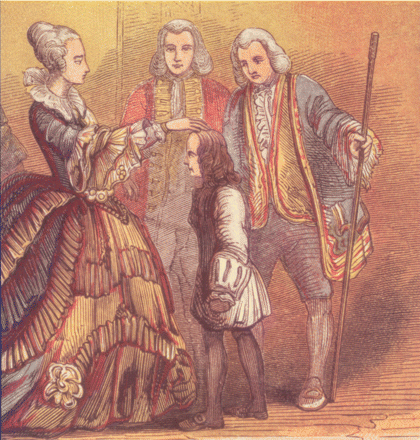
Wikimedia Commons
The King’s Evil was the name given in medieval times to scrofula (Tuberculous lymphadenitis),[1] a swelling of the lymph nodes in the neck caused by tuberculosis. It was believed that a touch from royalty could heal the disease, a practice that began with King Edward the Confessor in England (1003/4–1066) and Philip I (1052–1108) in France. The last English monarch to perform the ceremony of the royal touch was Queen Anne, who died in 1714, but French monarchs continued the practice until the death of Charles X in 1825.[2]
The popularity of the ritual grew rapidly; by the end of the 13th century Edward I was touching 1000 sufferers each year, and over his twenty-year reign it is estimated that Charles II touched more than 90,000. Not all monarchs were equally happy to carry out the ritual however, perhaps notably Elizabeth I and James I. Elizabeth began to use it following her excommunication from the Catholic Church by Pope Pius V in 1570, to demonstrate the legitimacy of her claim to the English throne. James I, a formidable witch hunter, was fundamentally opposed to the practice of magic, and it was only with great difficulty that his advisers succeeded in persuading him to perform the ceremony.[3]
Ceremony of touching
The form of the ceremonial touching was laid down by Henry VII. Supplicants approached the throne one by one. The monarch would then touch them on the face while a chaplain read aloud a verse from the Gospel of St Mark: “They shall lay hands on the sick and they recover”. A white ribbon was then placed around their neck, from which hung a gold coin, a talisman against evil.[4]
Valentine Greatrakes
The logic of the ritual derived from the monarch’s consecration with holy oil at their consecration, which underlined their sacred status and that they derived their power from God.[4] But royalty did not have a monopoly on the claim to be able to cure the King’s Evil. Prominent among other spiritual healers was Valentine Greatrakes (1628–1683), who claimed that a “divine impulse” told him that he also could cure the disease by touching. His reputation for healing was such that he was championed by the scientist Robert Boyle among others, but he returned home to Ireland following an unsuccessful demonstration of his powers to Charles II in May 1666.[5]
